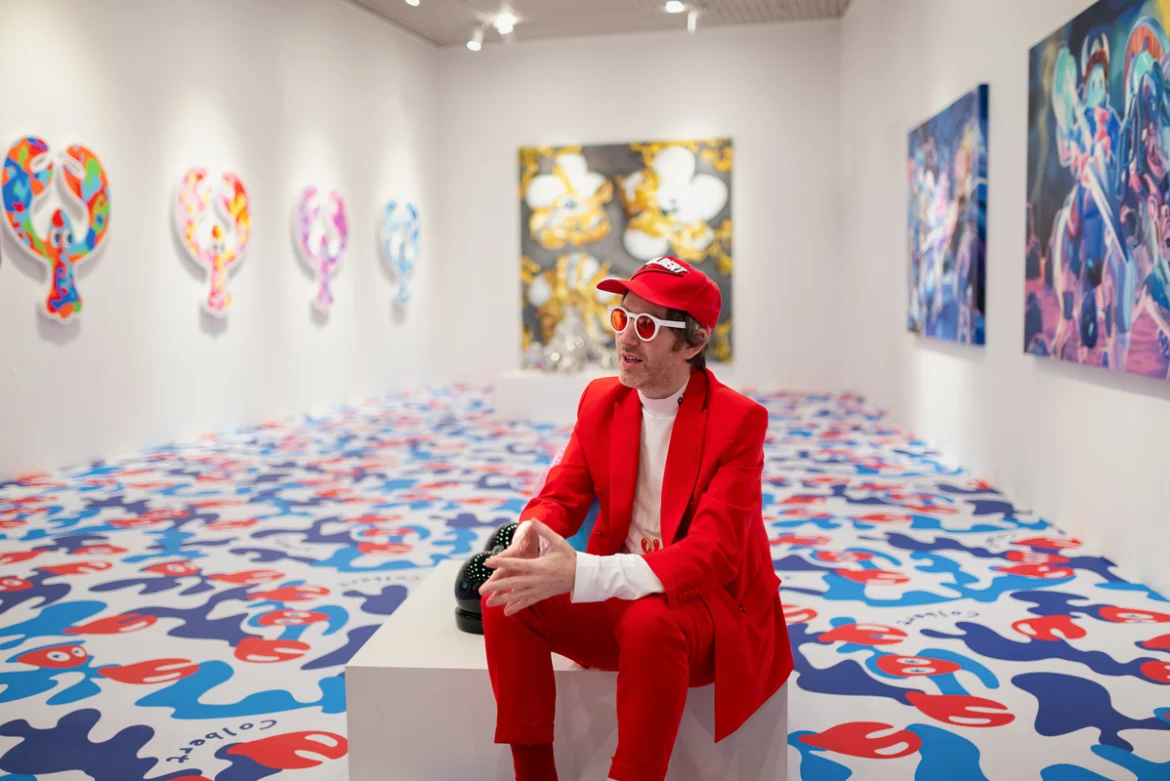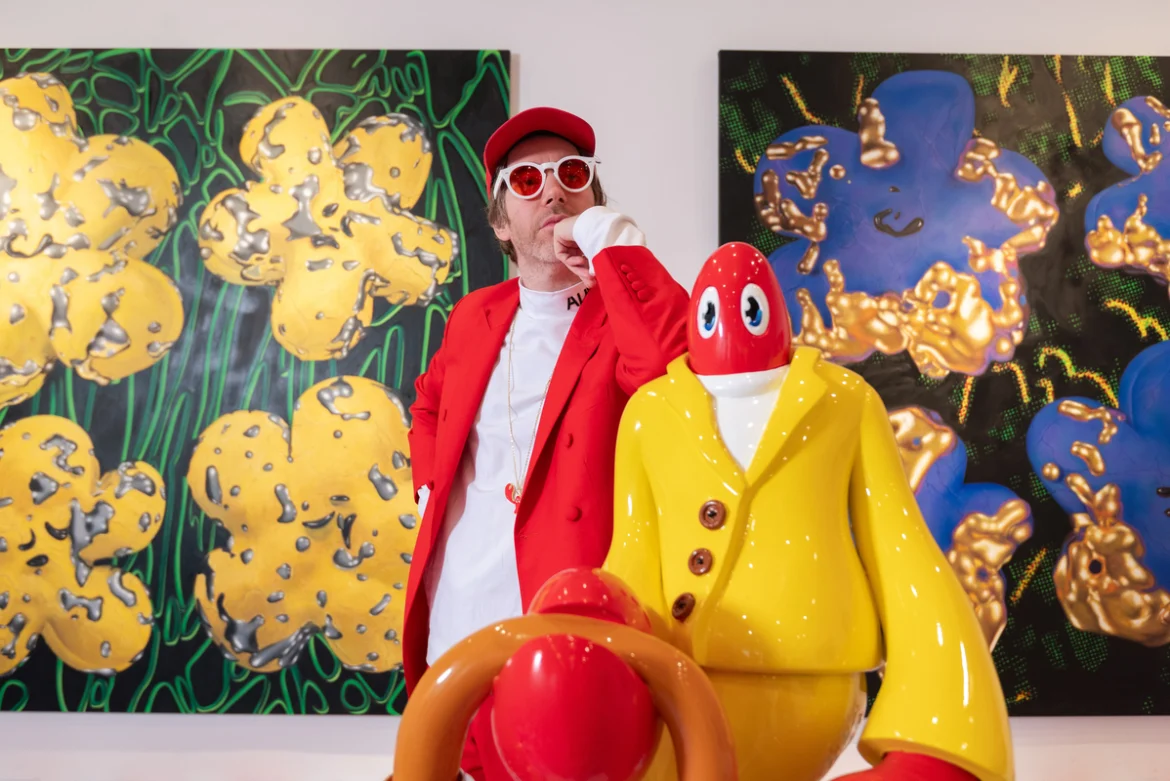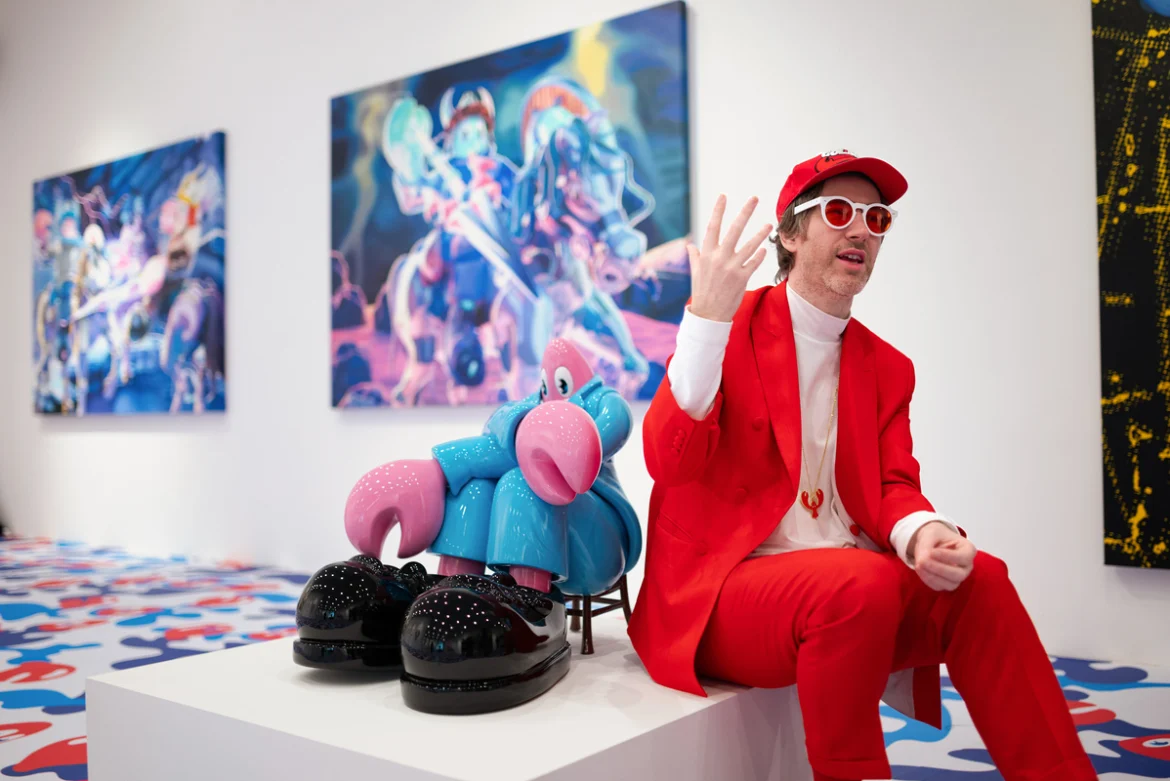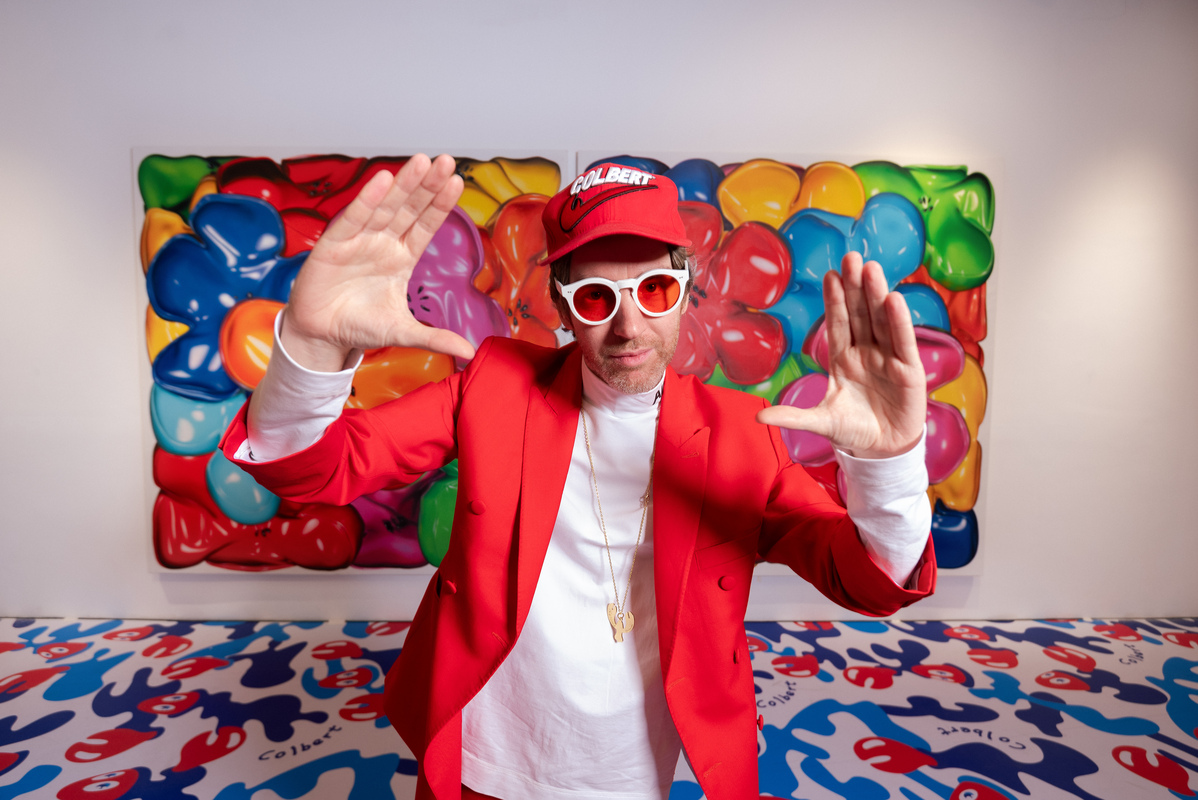
– You famously said, “I became an artist when I became a lobster.” It seems that this persona you created can be anything, capable of adapting to different scenarios and environments. Is this what you aim to be as an artist?
Philip Colbert – Yes, the Lobster is my artistic personality. What I love about art is the ability to create a language of fantasy or creation. On the other hand, the lobster was a symbol I created and used to wear on suits, hats, and other items. It was then that people started calling me ‘the lobster man.’ So, it was literally a byproduct because I was always wearing my creation. I was very interested in adopting this persona that represented my creative language. In essence, how can one transform oneself into something else through art? Art is a form of self-expression that can be transformative, even altering the notion of your identity.
That surreal quality of the [lobster] species was very inspiring. And the fact that they’ve been a significant representation of mortality since antiquity enriches their symbolism.
– In previous interviews, you mentioned that growing up in rural Scotland, the sea was equivalent to visiting Walt Disney in terms of how far your imagination could go. There was always a fascination with these “alien creatures” you saw in lobsters, which only grew when you encountered their representations throughout history, with many artists like Dalí incorporating them in their artworks. Did discovering this symbolic representation of lobsters over time motivate you to create this character?
P.C. – Yes, I was very inspired by their history: an alien-like creature, almost from another planet. I think that surreal quality of the species was very inspiring. And the fact that they’ve been a significant representation of mortality since antiquity enriches their symbolism. That’s why I find the lobster profound. Mine is red, the color a lobster turns when cooked, but mine is alive, as if it has a new life after death. It’s as if the very nature of art is our relationship with mortality, existence, and philosophical questions, which are what truly make us human. The Lobster is my own creative rebellion.
– You are known as the “godson” of Andy Warhol. What influence did he have on your life and your art?
P.C. – Warhol was very influential for me. I think it was his performative aspect, very much like Salvador Dalí. If you look at Andy Warhol’s interviews, his persona is almost performative art. It’s like a comedy act, in the sense that his personality was a vital part of who Warhol was. Salvador Dalí was similar. I enjoy treating life as an artistic stage, having this broader idea of art. Furthermore, Warhol was crucial because of his philosophy of celebrating everyday things like soup cans, celebrities, and other elements of pop culture, elevating them to the pedestal of high art. This philosophy resonates deeply with me. I also feel connected to Marcel Duchamp and his work called Fountain, as much of Warhol’s theory was influenced by Duchamp and the power of conceptual art, the value of an idea, and the possibility of using ready-made, pre-existing concepts and recycling them into one’s own work. The Lobster is almost a product of self-discovery, as we live in a world of mass production and hyper-consumption. In a way, my persona, my artistic self, is also a product. It’s a sculpture, but it’s also a toy and appears on t-shirts. It’s very direct as a brand and a product. And this democratization of art, making it accessible to everyone, is something I genuinely believe in. But I also find the tension between meaning and commercialization intriguing, and I explore this in my work.
– Your art travels through time, often recreating iconic scenes or pieces of art. However, you use technological means, such as AI, for these recreations, which is an interesting contrast to the original works. When did you start viewing technology as a medium of production? Do you use it deliberately to confront the public with a new reality?
P.C. – Yes, I think every generation seeks to create new meaning or possibilities for art. Art is this ongoing conversation in human history that has evolved over time, growing with contributions. For this reason, I believe 21st-century art is largely about the power of technology to elevate and expand possibilities, question art, and challenge it. For me, the most exciting aspect of art is going where no one else has been before.
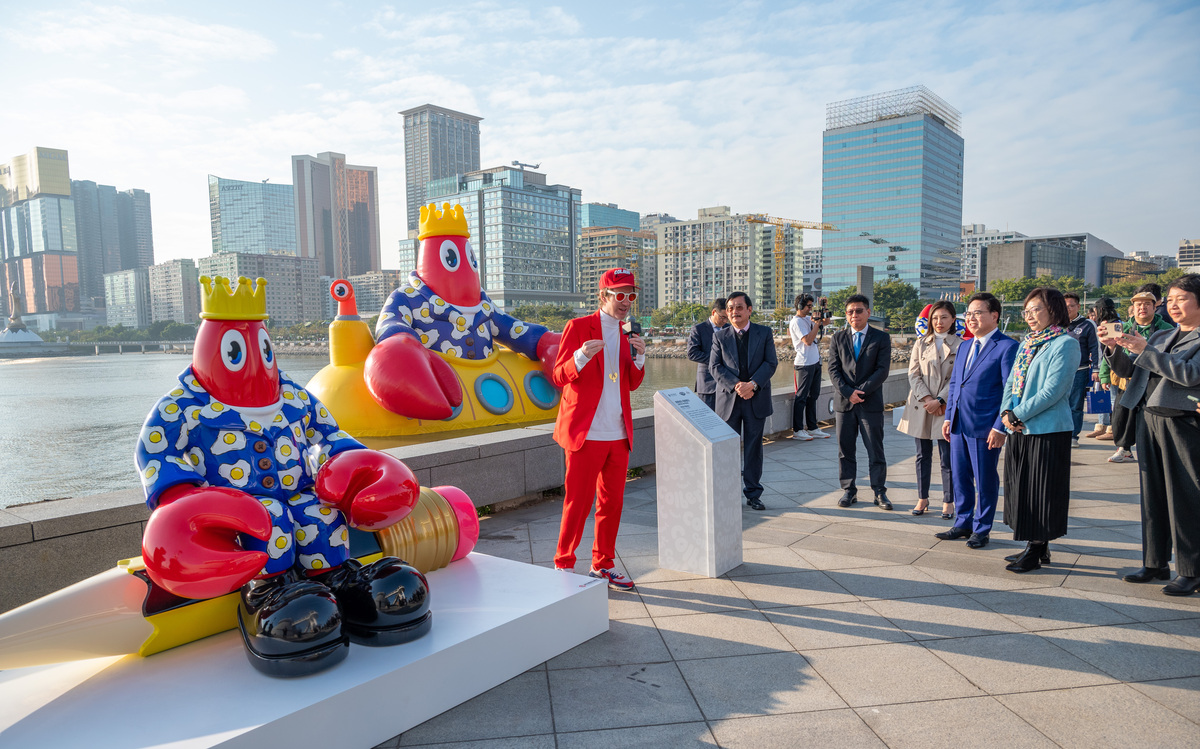
Until March 16, the Macao Science Center waterfront features a new 15-metre-high inflatable installation, Lobster Submarine.
I believe Macao is a highly artistic city. It’s a place where rules can be played with.”
– Some of the designs presented in Macao are new, blending seamlessly with the city’s environment to reflect its rich cultural heritage. As someone observing from the outside, what stands out about Macao? What have you learned about the city?
P.C. – I love the sense of fantasy in Macao. For example, the architecture, which takes and combines the best and most iconic elements from around the world into one environment, creates a sense of creativity and fantasy as the driving force behind much of its design. That’s why I believe Macao is a highly artistic city. It’s a place where rules can be played with, where old buildings can stand next to new ones, traditional styles alongside contemporary ones. There’s a lot of freedom. I believe Macao is today’s pop art capital of the world. I feel my work is very fitting here, and my Lobster persona feels deeply connected to the city. I’m fortunate that both the Cultural Affairs Bureau and Sands China had the ambition to execute an art takeover of this scale. I believe this is the largest artistic takeover in the city’s history by a single artist. Being able to create something of this magnitude is an amazing privilege and very exciting for me.



